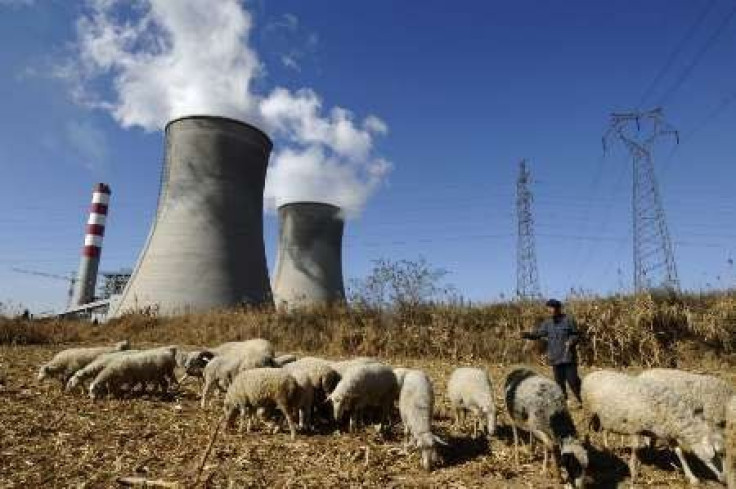China to launch energy cap-and-trade trials in green push

China is planning trial efforts for an energy cap-and-trade scheme, applying market forces to its goals to reduce fossil fuel consumption and greenhouse gas pollution, the government said on Saturday.
The announcement added to evidence that China will focus on using broad energy consumption levers to pursue its goal of cutting carbon intensity, a measure of how much carbon dioxide -- the main greenhouse gas from fossil fuels -- is emitted to produce each unit of economic growth.
We will carry out pilot programmes on a cap-and-trade system for controlling overall energy consumption and trading energy savings, said the National Development and Reform Commission (NDRC) annual report, issued at the start of China's annual parliamentary session.
We will put in place a statistics and accounting system for greenhouse gas emissions, the NDRC also said of its tasks for 2011.
China is the world's biggest emitter of the greenhouse gases from human activity, and the embryonic cap-and-trade system will be part of the nation's efforts to cut carbon intensity by 40-45 percent by 2020 compared to 2005 levels.
Chinese Premier Wen Jiabao told the parliament that the country would cut energy intensity by 16 percent and carbon intensity by 17 percent by the end of 2015.
We are keenly aware that we will have a serious problem in that our development is not yet well balanced, coordinated or sustainable, Wen told the parliament.
He said growing resource and environmental constraints are hindering growth.
The NDRC report gave no more details of what policy planners have in mind, but some Chinese regions have been lobbying Beijing to allow them to launch local pilot carbon cap-and-trade markets in the next five years.
Provinces pushing proposals for an early start to such markets include Jiangxi in the east, Hebei in the north, Sichuan in the southwest, and Guangdong in the south.
ENERGY QUOTAS?
Using energy or fossil fuel limits as the basis for a cap-and-trade business could help local governments get around the process of measuring and monitoring C02 emissions. The schemes could involve provinces allocating energy quotas to cities or sectors which could then trade among themselves.
The NDRC issued a document last year calling on 13 pilot low-carbon provinces and cities to draw up C02 emission reduction strategies and study the use of market mechanisms.
Government researchers have dismissed the idea of a national cap on emissions, but on Friday, China's former energy policy chief Zhang Guobao said the government will impose a hard limit on total energy use. That would cap consumption from all sources at the equivalent of 4 billion tonnes of coal (TCE) by 2015, he said.
China's energy use was 3.25 billion tonnes of coal equivalent in 2010, up 5.9 percent year on year, government data showed.
China's five-year development plan for 2011-2015, which was released at the parliament's opening, also flagged tax changes intended to encourage greater energy efficiency and lower pollution.
China would make appropriate increases in resource taxes, shifting the focus of collection from volumes of minerals and other resources to their value, said the document.
The government will also introduce and expand an environmental protection tax, while seeking to avoid making collection of it too cumbersome, it said.
© Copyright Thomson Reuters 2024. All rights reserved.











